Journal of the NACAA
ISSN 2158-9429
Volume 8, Issue 2 - December, 2015
Genesis of the Salt Lake County Jail Horticulture Program - 5 Years and Growing
- Wagner, K.M., Horticultural Faculty, Utah State University Extension in Salt Lake County
ABSTRACT
The Salt Lake County Jail Horticulture Program is a partnership between the Salt Lake County Jail Programs Division and USU Extension in Salt Lake County. The program provides prisoners both classroom-style instruction and in-field horticulture training. Participating prisoners maintain a 1.5 acre field with over 50 varieties of vegetable, fruit and herb crops, high tunnels and two production greenhouses. Produce is sold at farmers’ markets or donated to local charitable programs. Between 2012 and 2015, 164 prisoners and staff completed 10 hours of in-class, research-based horticulture instruction, called the ‘Excellence in Gardening’ curriculum. The curriculum is taught by USU Extension horticulture faculty and introduces prisoners to career opportunities in the green industry and agriculture job fields. Post-event survey results of the in-class training found respondents experienced an 87% increased interest in seeking green industry/agriculture employment compared to respondents' interest prior to taking the curriculum. Survey results also found that one in 10 respondents had been employed in the green industry prior to being incarcerated and 50% planned to use information provided in class to start their own garden post-release. The top 5 job/education/volunteer interests among respondents were landscape maintenance, arboriculture, continued education in horticulture (college, certifications, Master Gardener program), community gardening and greenhouse/nursery work.
Introduction
Jail gardens have emerged as a popular rehabilitation opportunity for incarcerated people in jail and prison facilities across the country. A University of Wisconsin Extension horticulture educator working with Rock County Sheriff Department’s RECAP program documented multiple benefits of participating prisoners including cognitive and intellectual benefits, social benefits, psychological development, and physical improvement (Maddox, 2010). In addition to therapeutic benefits, jail garden programs can also provide prisoners with hands-on learning opportunities in multiple fields of study including agriculture, horticulture, weed management, irrigation maintenance/installation and greenhouse production. Prisoners also benefit from jail garden programs when they ‘use their horticulture and agricultural training in job hunting’ (Gao, Dupree, & McKee, 1995). These benefits echo the goal of the Salt Lake County Jail Programs Division to ‘provide education, treatment, and vocational training to qualified, non-violent prisoners’ to ‘facilitate reintegration and reduce recidivism while increasing safety within Salt Lake County and reducing the expense of incarceration’ (Salt Lake County Sheriff’s Office, 2015).
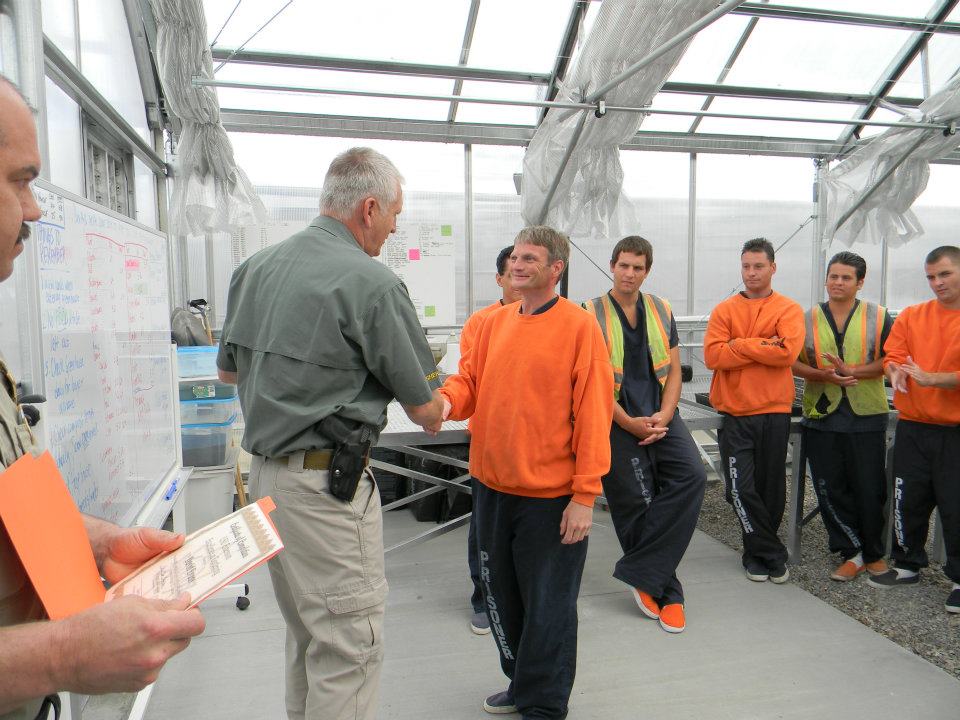
'Excellence in Gardening' certificates being awarded to jail horticulture program participants by Salt Lake County Sheriff James Winder during a graduation ceremony.
Program History
The first garden at the Salt Lake County Jail broke ground in 2007 and a prisoner-run vendor’s booth became a popular addition to the Downtown Farmers’ Market; however, due to budget constraints, the program was discontinued in 2009. The first jail garden utilized Master Gardener volunteers to provide in-field horticulture training to prisoners, however, due to difficulties with volunteers strictly adhering to jail regulations and issues with garden access due to policy requirements regarding volunteers, this approach was abandoned after 2009. These difficulties were similar to those documented by University of Nevada Extension educators who taught horticulture training programs at multiple Nevada prison correctional facilities (Robinson & O’Callaghan, 2008). Jail administration approached USU Extension faculty in 2011 to re-launch the Salt Lake County Jail Horticulture Program with the goal to return to the farmers’ market in 2012. Participating prisoners’ are responsible for all associated labor and maintenance of garden plants. Pest populations are controlled using integrated pest management (IPM) techniques and, although not USDA certified organic, produce is mostly grown using practices accepted under the National Organic Program (NOP).

Jail horticutlure program participants transplanting onion starts grown from seed in the greenhouses.
In its re-launch year, USU Extension horticulture faculty provided regular in-field training to prisoners and officers which was a time-consumptive responsibility. Horticulture faculty could not commit the amount of time it would take to continue to over-see day-to-day operations at the garden and hence urged jail administration to hire horticulture staff to assume this role. In addition to two part-time staff, the jail also decided to fund two on-site greenhouses to start garden plants from seed, grow Mothers’ Day flower baskets and provide a space for hands-on greenhouse production experience to prisoners during the winter season. The greenhouses and high tunnels have enabled the program to expand to year-round production and consequently prisoners run a vendor’s booth at the winter farmers’ market in Salt Lake City. In 2012, Extension horticulture faculty shifted focus toward teaching a 10 hour gardening curriculum to participating prisoners quarterly and jail-hired horticulturists assumed responsibility of day-to-day in-field instruction and coordination of produce sales.
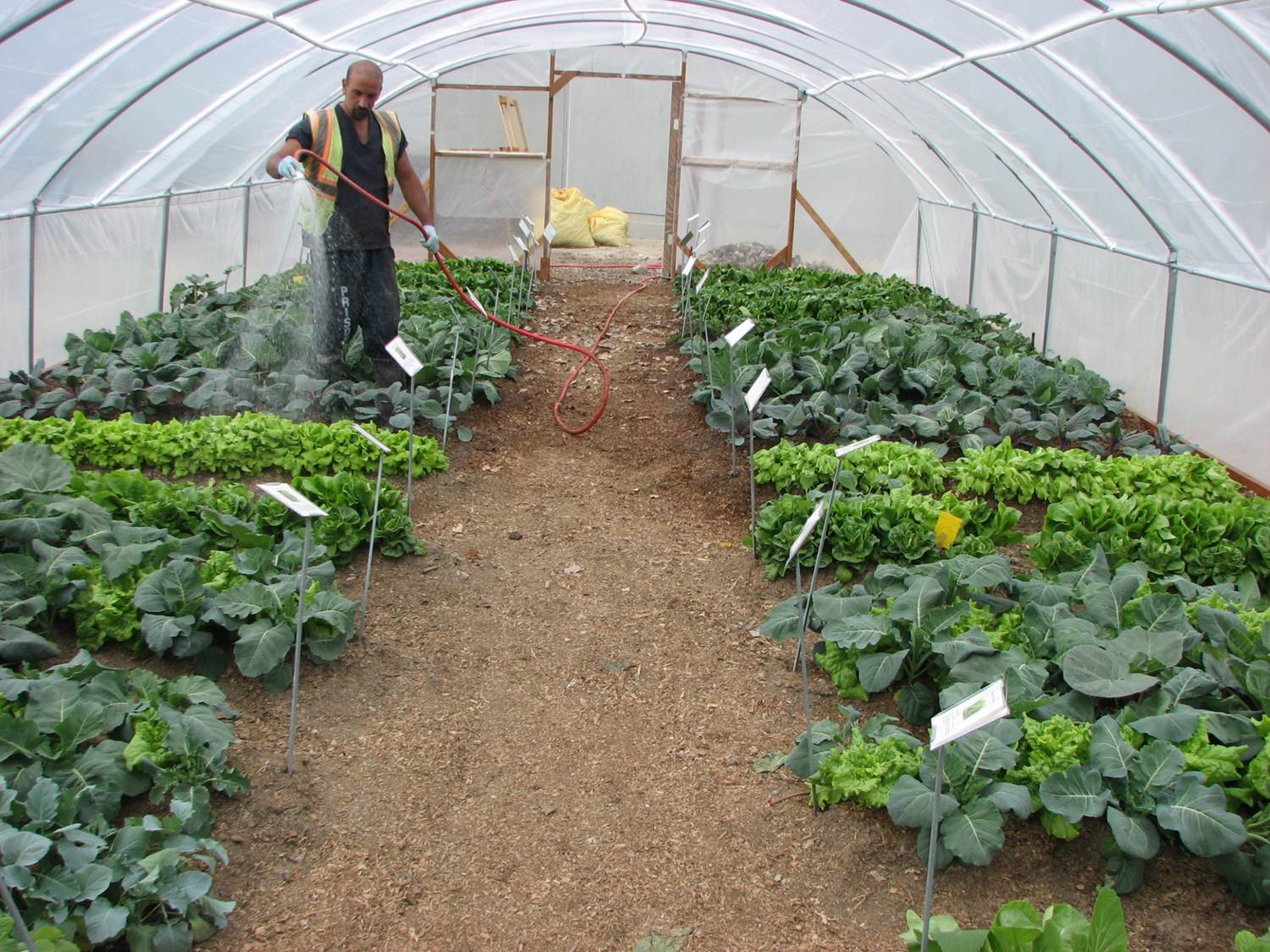
The addition of high tunnels has enabled the Salt Lake County Jail Horticulture Program to expand to year-round production which consequently provides garden workers with jail sentences that extend into the winter months the opportunity to participate in the program.
Results and Discussion
At the conclusion of the in-class instruction, called the ‘Excellence in Gardening’ curriculum, USU Extension horticulture faculty asked if participating prisoners would voluntarily complete an anonymous course evaluation survey. 145 prisoners returned completed surveys. Survey design and publication plans were reviewed by USU’s Institutional Review Board and permission was obtained to publish survey results. Survey questions asked participating prisoners:
- If they had they considered a job in the green industry prior to taking the curriculum (yes/no)?
- If they would consider seeking employment in the green industry after completing the curriculum (yes/no)?
- If yes, what type of green industry jobs?
- If they planned to use information presented in the curriculum?
- If yes, in what ways did they planned to use the information?
Responses to questions 1 and 2 found 50% of prisoners had considered a green industry job prior to taking the curriculum and of those, almost 20% had been previously employed in the green industry. Among the entire surveyed population, 10% of respondents had previously been employed in the green industry. 47% of respondents had not considered a job in the green industry prior to the curriculum and 86% of all respondents were interested in seeking a green industry job post-release. There was an 87% increase of interest in green industry employment among those that had not considered a green industry job prior to taking the curriculum.
Responses to questions 3, 4 and 5 found the following job/education/volunteering interests among respondents; multiple responses from the same individual were accepted (total responses = 194):
- Landscape maintenance (23%, n=45)
- Tree care/arboriculture/tree trimming (16%, n=31)
- Continuing education (college, certification courses, Master Gardener program) (12%, n=24)
- Community gardening (12%, n=23)
- Greenhouse/nursery work (11%, n=21)
- Farming/production (8%, n=16)
- Irrigation design/installation (6%, n=11)
- Landscape design (4%, n=8)
- Community volunteering (4%, n=8)
- Turf care (4%, n=7)
Although not specifically asked in the survey, 50% of respondents indicated that they planned to grow a garden post-release. This was the most frequent reply to the question asking how they planned to use information from the curriculum. Therefore, an additional impact of jail horticulture training programs might also include an increase in released prisoners who choose to grow a garden post-release.
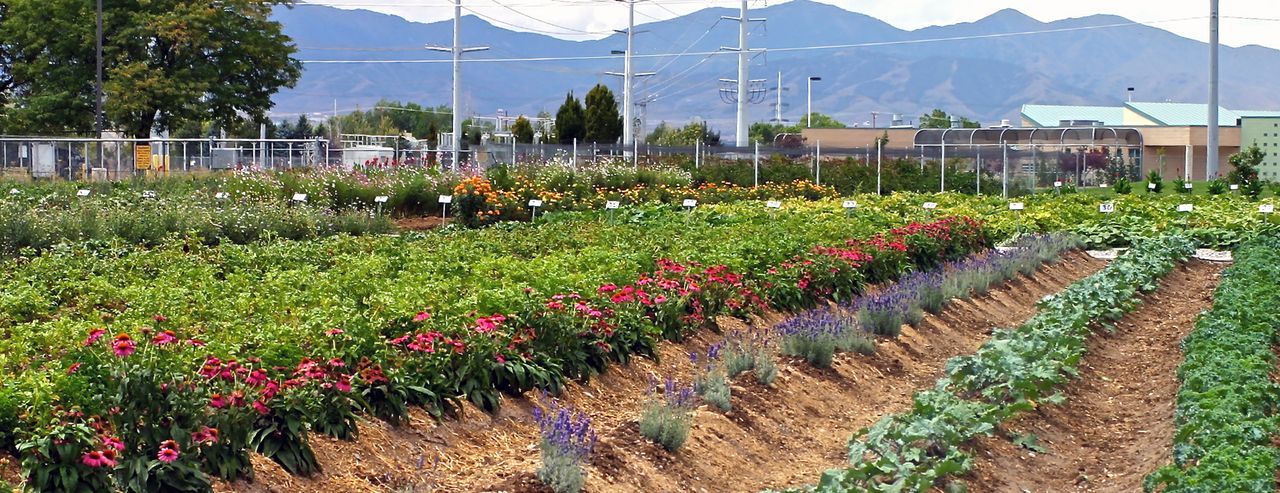
Prisoners who participate in the Salt Lake County Jail Horticulture Program learn how to grow and maintain garden plants which are skills they can apply if they choose to start their own garden after they are released from jail.
Conclusion
After 4 years of teaching the ‘Excellence in Gardening’ curriculum and 5 years partnering with the Salt Lake County Jail Horticulture Program, there is no doubt that a majority of the program’s participants express an interest in green industry employment. These types of jobs can be a good option for interested individuals as contractors can be self-employed and hence avoid employment rejection due to their criminal record. It is impossible to track prisoners post-release without their consent, but such a high level of interest gives hope that this program has positively impacted the lives and families of at least a portion of its participants. The author has heard a handful of stories from released prisoners and families of released prisoners stating ‘the first thing ‘John Doe’ wanted to do after he was released from jail was to start his own garden’, which has been validating feedback.
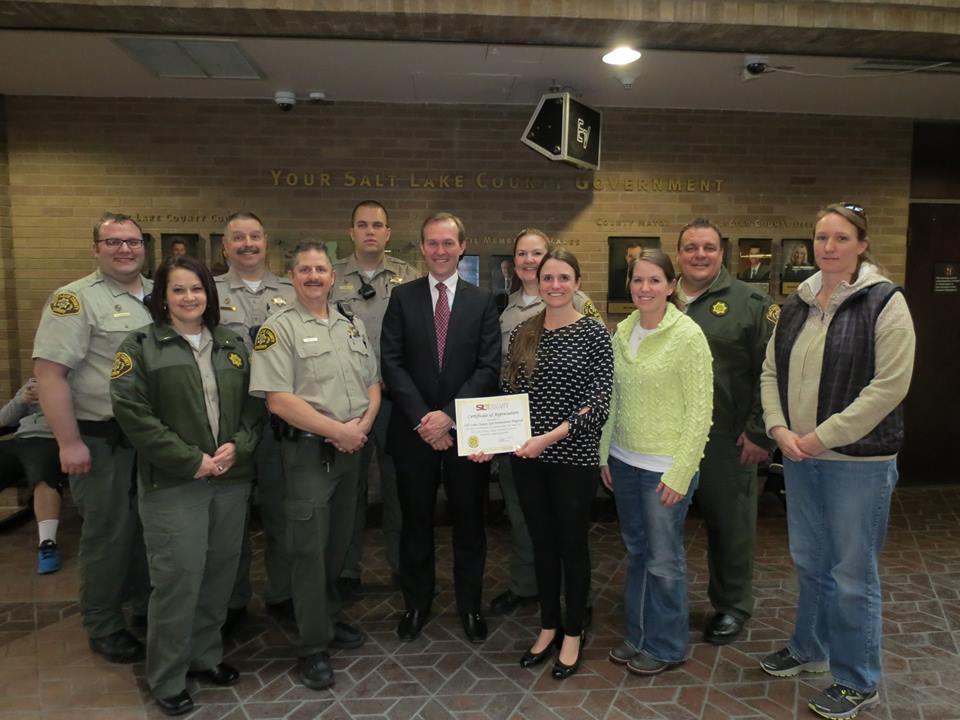
Combined support from jail administration, officers, jail horticulturalists and USU Extension facutly have been the key to the success, sustainability and continued growth of the Salt Lake County Jail Horticulture Program. Here, all the team members are being recongnized by Salt Lake County Mayor, Ben McAdams at a Salt Lake County Council meeting.
The following tips might be considered by other Extension educators who consider starting a jail horticulture training program.
- Prisoners tend to have a lot of energy and enjoy ‘learning by doing’ so classroom instruction coupled with in-field training can provide participants a positive and impactful experience.
- In-field training can help to reinforce and expand classroom instruction; however, day-to-day in-field guidance can be a time-consumptive responsibility so it is best, if possible, to have devoted staff to manage this time.
- Internal Review Boards (IRB) classify prisoners as a ‘vulnerable population’ so if you plan to publish or present data, expect IRB approval to take time and patience.
- It is ideal to incorporate winter-time training opportunities for prisoners to provide individuals with sentences that extent into the winter months, the opportunity to participate in the program.
- Keep divulgence of your personal life to a minimum and show participants respect by answering questions, encouraging discussion and teaching ‘enthusiastically’ and you will be rewarded with a respectful and captive audience.
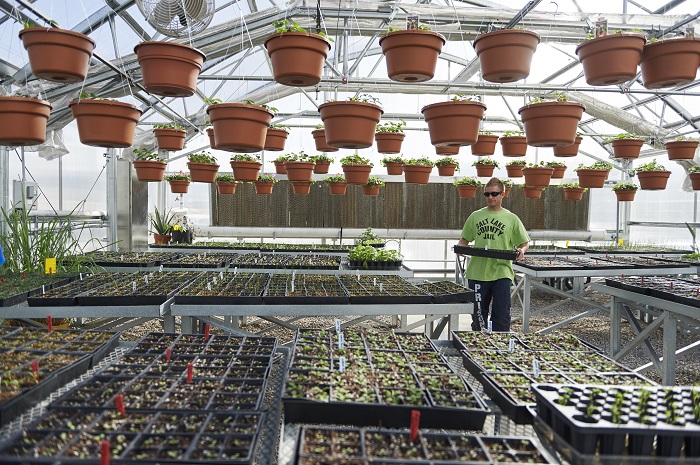
Greehhouse filled with plant starts and Mother's Day baskets.
References
Gao, G., Dupree, K., & McKee, S. (1995). Rehabilitating misdemeanor offenders at county jail through Extension education. Journal of Extension. [On-line], 33(6). Article 6IAW3. Available at: http://www.joe.org/joe/1995december/iw3.php
Maddox, M. (2010). Using gardening to teach life skills to jail inmates. Rock County University of Wisconsin Extension Slide-share Presentation [Online] Available at:https://www.slideshare.net/ElisaMendelsohn/using-gardening-to-teach-life-skills-to-jail-inmates
Robinson, M. L., & O’Callaghan, A. (2008). Expanding horticulture training into prison population. Journal of Extension. [On-line], 46(4). Article 4IAW4. Available at: http://www.joe.org/joe/2008august/iw4.php
Salt Lake County Sheriff’s Office Jail Programs Division Website. (2015). Available at: http://www.slsheriff.org/metro-jail/jail-programs
